Fishing For Brook Trout: Full Article
Brook trout fishing in rivers is popular among many anglers in northern states and in Canada. Fishing for brook trout in rivers is something that I do as a river guide and I have had the opportunity to fish for brook trout with many other guides so you will find all the brook trout fishing information you will need as well as tips and tricks used by river guides.
Brook trout fishing in rivers is similar to river fishing for Rainbow Trout, Brown Trout, and even Steelhead but since brook trout prefer colder water and are often found in the smallest streams, there are some differences and methods that are more suitable for brook trout fishing.
Brook Trout Fishing In Rivers: Why It’s Different
The brook trout is a freshwater fish native to Eastern North America. Anglers that want to fish for brook trout will need to know where to fish for them.
Even though brook trout can be found in ponds and lakes, brook trout are prevalent in very cold streams and rivers and it’s these stream brook trout that I guide for and what this article is about.
Because the brook trouts requirement for cold water, they are often found far up the rivers where the coldest water is, and because of this, they will often feed on different food sources, and they will hold and feed in different areas than other trout would.
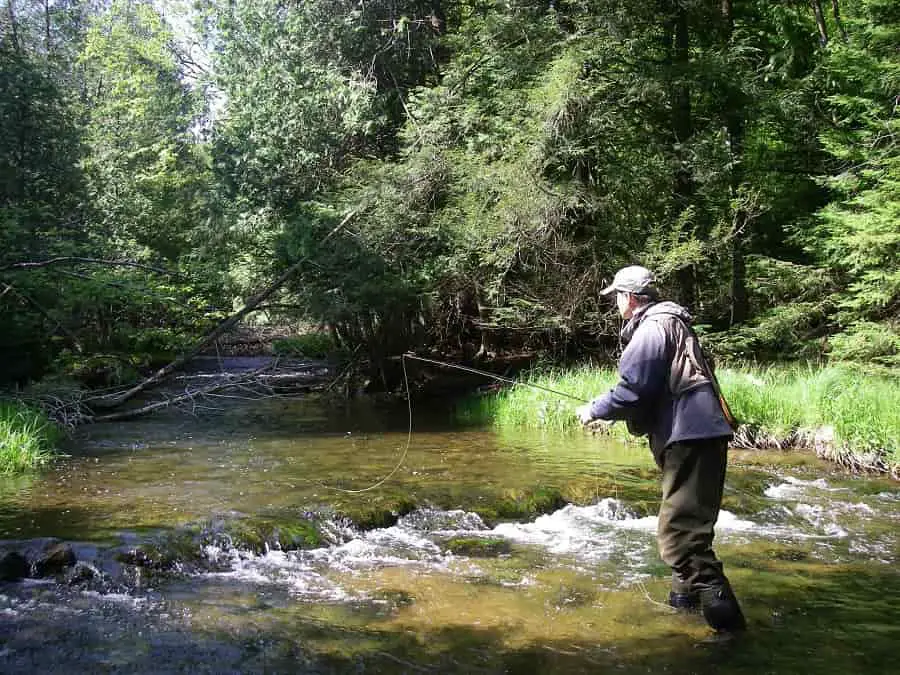
The food sources in a tiny cold stream will be different than in the lower wider and warmer parts of the same river and this is something anglers should know.
While big brown trout and rainbow trout might be feeding on more baitfish, bigger flies, and terrestrials like grasshoppers in the lower reaches of a river, far up the river in forested sections where the stream is only 3 to 10 feet wide, that type of food source may not be available to the brook trout so angler will need to adapt and understand what the brook trout eat and where the eat.
The brown trout and the rainbow trout that can tolerate warmer waters in the lower sections of a river might sit and feed in the riffles and in faster water that is often found above or below the pools. Those riffle areas might still be two to three feet deep because it’s a bigger and deeper section of the river.
But the riffle sections found far up the same river where the brook trout reside might only be 3 to 6 inches deep and therefore too shallow for the trout to hold and feed.
Instead, brook trout will often find and use structure and deeper sections that may concentrate them and this is where anglers need to focus their efforts. I will discuss brook trout habitats and food below.
What Is a Brook Trout; Other Common Names
Brook Trout is a species of freshwater fish that belongs to the salmon family Salmonidae. It is native to the United States and Canada but can be found in some parts of Europe and Asia, too.
Brook trout is named after the habitat in which it is found, some people call a small stream a brook. Its Latin name is Salvelinus fontinalis, which translates to “little salmon living in springs.”
The brook trout is also known by other names such as speckled trout, eastern brook trout, brook charr, brookie, squaretail, and even mud trout. Migratory brook trout found in Lake Superior and Maine are also called coaster trout, or just coasters, or as I call them coaster brookies, and can also be called sea-run brook trout.
Where Do Brook Trout Live?
Knowing the type of water where brook trout thrive is important to anglers.
River brook trout prefer headwater spring ponds and small spring-fed streams, riffles, runs, pools, and damned areas, but they can inhabit many different aquatic environments. They can live in:
- River and stream systems with cold water
- Small and large tributaries to the main river as long as it’s cold
- Small ponds, often ones that are attached to a stream with an inflow and outflow
- Lakes, there are some lakes, especially in Canada that have good brook trout populations, including massive lakes like Lake Superior.
- Oceans; rare, but found close to shore these are the so-called “salters”
Since brook trout prefer clear, cold waters with an abundance of oxygen, it is important for an angler that is brook trout fishing in rivers to locate these spots.
GUIDE TIP: I have found a lot of good brook trout streams simply by having a stream thermometer and then checking river temps on hot days in mid-summer. If the river is below 64F, there is a good chance that it will hold brook trout. This is a great way to determine if a stream is suitable for brook trout.
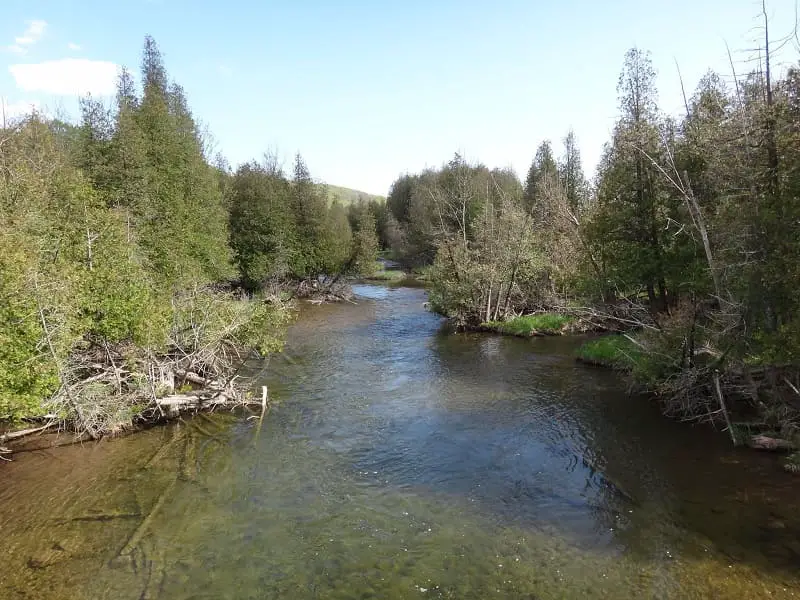
Brook trout prefer areas with a mix and moderate and strong currents, and they require good oxygen content, enough food to keep them fed, and they like cover and depth, but most importantly they need cold clean water to survive.
You can also find brook trout in beaver dams, ponds, and in some lakes, but the truth is in a river, they can be found almost anywhere from very shallow runs 12 inches or less to spots over 20 feet deep.
Brook Trout Range
If you are an angler looking to find out if there is brook trout fishing in your area, their range varies. As we have already established, brook trout are native to the northeastern United States and eastern Canada.
Their range stretches all the way to Eastern Minnesota and includes the Appalachian Mountains. Brook Trout can also be found in some high elevation streams as far as South Georgia.
There are areas of only natural populations (never stocked), and many areas where stocking has produced good brook trout populations.
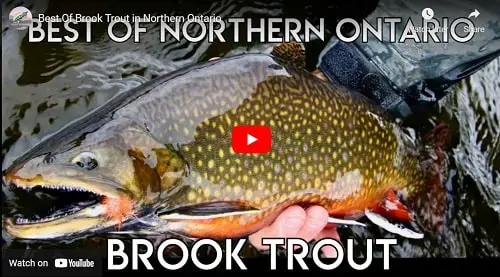
Many anglers claim that Northwestern Ontario’s Albany River watershed offers the best brook trout fishing experience but there are many areas in Manitoba, Ontario, and Quebec that have world-class brook trout fishing.
Check out what Ontario brook trout fishing is all about on this brook trout episode of the New Fly Fisher.
What Do Brook Trout Eat?
Brook trout are opportunistic feeders, and they eat almost anything they find. They prefer aquatic insects living on the river bottom, but they will eat land insects that fall into the water, too.
Older brook trout eat larger invertebrates, such as snails and worms. If minnows or small fish appear as an easy prey, brook trout will seize the opportunity and eat them. In fact some of the largest brook trout that I have seen tried to eat the five-inch brook trout that I or my clients were reeling in.
Most of my largest brook trout ever caught were caught on 3 to 5 inch streamer flies which teel you how much they like baitfish and things like leeches.
Brook trout will also eat frogs and small mammals like mice and some fly anglers will use large mouse patterns for big brook trout.
What Eats Brook Trout?
Large brook trout do not have many enemies apart from anglers and maybe eagles or ospreys. There aren’t many fish-eating predator fish living in their smaller cold environments way up in the streams, but some smaller brook trout might also fall prey to some fish-eating birds such as herons or kingfishers. River otters, weasels, and snapping turtles might also eat brook trout.
Small brook trout might also be eaten by bigger brook trout or even other trout or salmon that reside in the same areas.
What Does ABrook Trout Look Like?
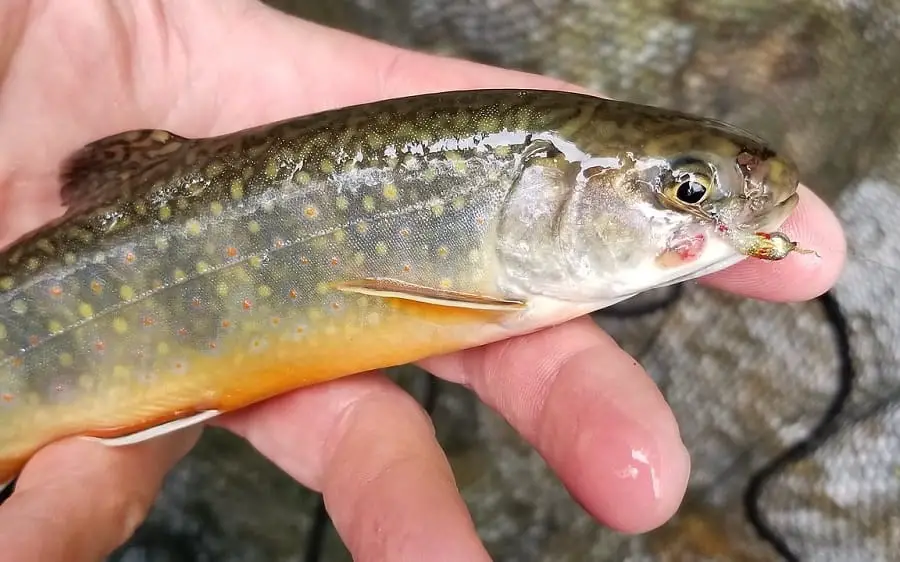
Brook Trout are beautiful fish with unique markings. They are usually olive green with a dark olive-green back and orange or red lower fins. Their underside is often yellow or a milky white color.
Their colors could also depend on if they are male or female, the type of water they live in, as well as if they are spawning or not. Spawning brook trout can take on some very cool colors.
Depending on the area, most brook trout have spots all over their body and their dorsal spots are cream-colored (almost yellow) and a bit stretched. The red spots mostly found below their lateral line are almost perfectly round and bordered by a bluish halo. Thanks to these spots, Brook Trout are often called speckled trout.
How Big Are Brook Trout?
The size of a Brook Trout depends on the water environment it lives in and average sizes can range from 5 inches to 20 inches.
In general, most Brook Trout caught from small heavily fished streams measure 6 to 10 inches long (150 to 250 mm). In lakes or larger rivers where their forage is more plentiful, 20-inch brook trout will be more common.
Brook Trout fishing in mid-sized rivers with less fishing pressure usually yields specimens that reach 9 to 10 inches (23 to 25 centimeters) in length.
Ever Wonder Why Brook Trout Are So Small?
Because most brook trout live in the smallest sections of rivers they do not tend to get very big and there are reasons for this that you might not realize. Brook trout often have tough lives and they die young due to natural causes which in turn results in smaller average sizes.
In the winter months, ice will cover much of the stream and the ice can often make sections of the river too thin from the ice to the river bottom for brook trout to live. This forces brook trout to concentrate in deeper pools but that often results in fierce competition for minimal food as well as predation from bigger fish. It also opens them up to predators such as mink and river otters.
The same type of concentration can also happen during the summer. If the water starts to become too warm or too shallow, brook trout will concentrate back into these deeper sections of the stream where they have lots of other fish competing for little food. A lack of food and competition often means slow or stagnant growth and small brook trout.
A local biologist once told me they call these summertime concentration spots “cold water refuges” and these spots can often hold hundreds of fish in a very small area. Many of these refuges have groundwater seeping into them that helps the brook trout service the heat of the summer. This causes another problem for brook trout, and that is angling pressure.
Once anglers find these hungry and concentrated brook trout they can easily go in and catch lots of them, and keep them. And, on top of that, many anglers like to brag so they tell their buddies and then those guys go and catch a bunch too, and so on and so on.
A local guide up here told me he found a spot that had hundreds of brook trout concentrated in it. The very next year it was empty and the entire river seemed void of brook trout. He told me the only thing he found in that spot was signs of other anglers.
Finding Bigger Brook Trout
If you hope to catch a bigger brook trout, try brook trout fishing in areas that aren’t as heavily fished, or try finding brook trout in bigger rivers with abundant food sources.
I have a six-pound brook trout mounted on my wall (which belongs to and was caught by a good client of mine) and that brook trout came from a river that was about 12 -15 feet wide with an average depth of fifteen inches but it was also on private property where nobody else is allowed to fish, and because of that, there are lots of HUGE brook trout in that tiny river.
Other public sections on that same river have very few big trout because anglers harvest them, or pressure them into other areas.
Another client caught a 4lb and a 5-pound brook trout on another small stream that averaged 7 to 9 feet wide and it was also on a section of that stream that nobody fishes. This shows that brook trout can get big even in small rivers as long as the condition are good for them.
Larger rivers, lakes, and ponds often have bigger brook trout that can average over 15 inches long. Brook Trout living along the shores of Lake Superior can grow to be 24 inches long and the record for this area is over 14 pounds.
As an example of the potential size of brook trout, the brook trout which won the Minnesota state angling record weighed 6 lbs 5oz (3 kg).
The biggest Brook Trout in the world weighs 14.5 lbs (6.6 kg) from the Nipigon River in Ontario which is a massive and deep river that flows into Lake Superior and is where many large coaster brookies are caught.
Northern Ontario and Quebec Canada are known for bigger and deeper brook trout rivers where 4 to 5-pound brook trout are common.
How Long Do Brook Trout Live?
Brook Trout usually live 3 to 4 years depending on their habitat and food source. Only a few live to be 5 or 6 years old.
How And When Do Brook Trout Reproduce?
Brook Trout often reach sexual maturity by their second year. Luckily for them, they do not die after spawning like some of their salmon relatives, and they can reproduce each year of their adult life.
The brook trout spawning season begins in the early fall (usually in late September or at the beginning of October depending on the area) and lasts until late November. It depends on the water temperature since it needs to be in the 4.5- 9.5° C (40-49° F) range.
Northern Canada river will see brook trout finish spawning months earlier than in warmer southern states.
In streams and small rivers, brook trout prepare for spawning by finding riffle water where water passes through the sand and gravel. Females construct their nests while males hold guard and defend the area. Once the nest is ready, the pair releases their eggs and sperm and then the brook trout cover it all up with sand and gravel.
Depending on the water temperature, the eggs hatch after 50-150 days later. The colder the water, the longer it takes to hatch.
What Are Ideal Water Temps for Brook Trout Fishing?
Water temperature plays a crucial role when brook trout fishing in rivers and lakes. Some use this rule of the thumb: if the air temperature is uncomfortable for anglers, the brook trout feel uncomfortable as well but it’s a great idea to have a stream thermometer with you.
Brook Trout are cold-blooded fish, and their body temperature reflects the temperature of the water they are in. If it is below freezing or scorching hot outside and the water is out of their comfort range, the brook trout will often become inactive.
If this is the case on your favorite brook trout river it is often best to stay at home and wait for better days or only fish in the early mornings.
When water gets too warm, the brook trout fishing goes downhill pretty fast and I have experienced many days when the brook trout will go dormant once the water hits 67F. It becomes arduous to fish above this temperature since they are usually not feeding actively and fighting a brook trout in warm water can stress them out and even kill them.
How Hot Is Too Hot For Brook Trout?
When fishing for brook trout, it is important to understand high water temps. All three major trout species (brook, brown, and rainbow) start feeling stressed at around 68°F (20°C) but brook trout might start at 66°F.
As a river guide that spends a lot of time guiding for brook trout, I have found that 66F is a good time to go find colder water or quit fishing for the day. The level of stress rapidly increases as the temperature continues to rise.
Ideally, the temperature for brook trout fishing should be lower than 65° and anything between 55 and 63 is great for brook trout fishing.
Although the best fishing for brook trout is 55F to 63F, brook trout fishing can still be good if it is colder than this especially if the temperatures are stable or climbing slowly. The upper limit for Brook Trout fishing is 69°F (20.5°C) which in my opinion is a waste of time.
If you are into catch-and-release brook trout fishing in rivers, the upper limits we have just discussed can be misleading. Fish become dramatically more stressed when they are hooked and fight hard in warmer water. As a result, book trout caught and released under thermally stressful conditions might not survive even when handled properly.
We thus recommend that catch and release anglers pay special attention to water temperatures. In general, they should not go brook trout fishing when temperatures in moving water exceed 66°F (19°C).
Best Brook Trout Fishing Methods
Brook trout fishing requires some knowledge of the fish, where they live, and what they eat as well as some effective methods and baits. If you already have experience fishing other trout species such as Brown trout or Rainbow trout you should be good to go for brook trout. I use a lot of the same methods for brook trout as I would for other trout.
If you are new to brook trout fishing in rivers, consider one of the following methods:
- Fly Fishing – This is a very effective method that I use most of the time
- Spin fishing with lures – Small lure fishing can be effective and fun
- Float fishing – I use this method on bigger brook trout water or in deeper pools
It would be best to focus on one method until you develop all the necessary skills and perfect it. We recommend starting with the method that best suits your circumstances and budget or going with the one that you like the most. I will discuss my most productive and my favorite methods below.
Once you master one brook trout fishing style, you can move on to the next method on the list. Knowing all of them will improve your success rate at fishing brook trout allowing you to adapt to any fishing conditions.
As a river guide, adapting to the conditions is very important if I want to keep my clients catching brook trout.
Fly Fishing For Brook Trout
Before you begin fly fishing brook Trout, it’s best to learn the basics of fly fishing which you can see on my page Learn To Fly Fish. It will take time and practice to get the fly to land where you want it but with fly fishing you are able to imitate flies on the surface which is called dry fly fishing.
You will also be able to imitate all the aquatic insects found below the surface that trout love to eat. We call this Nymphing or nymph fishing.
You call also cast and retrieve streamer flies. Streamer flies imitate baitfish, leeches, frogs, and even mice. Often streamers take the biggest brook trout.
So you can see that fly fishing is very versatile and is why I and most of my guides prefer to fly fishing for brook trout.
For best results, you should try to find pools below rapids, submerged logs or rocks, waterfalls, or some pocket water and rapids since brook trout often hide in these places.
The Best Equipment For Brook Trout Fly Fishing
The best rod for brook trout fly fishing is usually a 3-weight fly rod with a floating weight forward fly line. You could also use a rod as light as a 2 weight or even as heavy as a 5 weight rod.
My go-to rod is an 8’6″ 4 weight fly rod because I have both lots of 5 to 10 inch brook trout and some tanks that can weigh up to six pounds in the rivers that I guide on.
If you fish in small streams with limited casting room, you can go as short as a 7-foot 6-inch rod. If you prefer brook trout fishing on larger trout rivers, it would be wise to use a standard 9-foot rod.
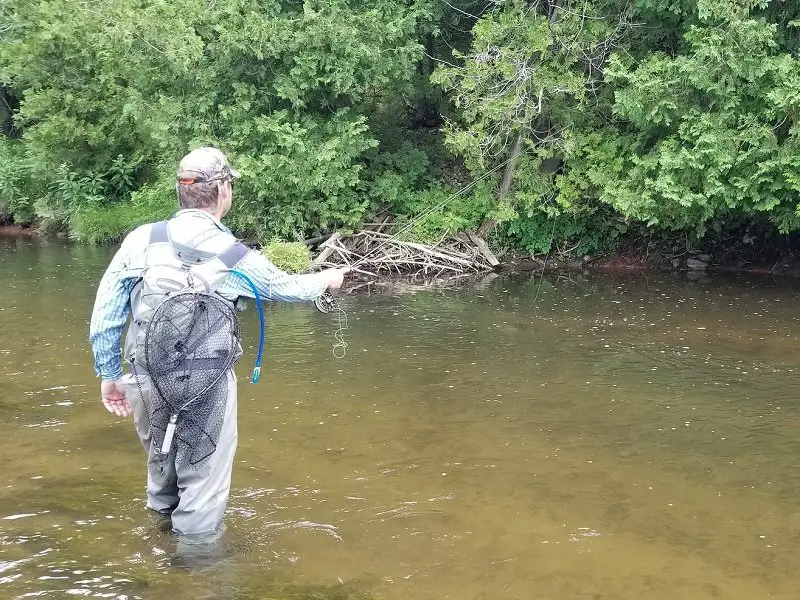
When nymph fishing I use a 10-foot 2 or 3-weight rod.
You’ll want your fly to drop down to where brook trout are resting and that calls for a split shot weight or weighted flies.
Best Flies For Brook Trout Fishing
You can use either nymphs, wet flies, dry flies, or streamers depending on the season and the type of water you fish. Either way, it is a good idea to have a good assortment of flies.
Brook Trouts will appreciate flies that look like natural bugs such as grasshoppers, but you can also use attractor patterns that don’t look like natural bugs and I find small brook trout love these attractor-type flies.
The list of suitable flies for brook trout fly fishing includes:
- Zonkers – Streamer – White is often my go-to color but I have done well with black, olive, and yellow. Other colors should work too.
- Woolly buggers – For Streamer or Nymph – Best in olive, black and white
- Bunny Leach Streamer – Best in olive, black and white
- Muddler Minnow: Great for all trout
- Marabou Muddler Minnow: See sizing for all flies below.
- Royal Coachman – Dry Fly – My favorite pattern for brook trout
- Royal Wulff – Dry Fly
- Humpy – Dry Fly – Yellow, red and orange bodies
- Terrestrials – Dry Fly or Nymph – Beetles, crickets, grasshoppers, and ants
- The Usual – Dry Fly – Works for most trout and brook trout love it
- Adams – A great early season dry fly
- Caddis fly – Dry Fly
- Olive duns – Dry fly
- Walts worm and Sext Walts Worm – My hottest brook trout nymph in 2021
- Caddis Larva and Peeping Caddis– For Nymphing
- Blow Torch
- Prince Nymph
- Pheasant Tail Nymph
- Frenchie
- Midnight Intruder fly
- SOS Fly
- Sanjuan worm – One of my most productive flies especially for big brook trout. My best colors are pink, brown, and red.
- Polish Pheasant Tail Nymph
- Surveyor Scud
- Pheasant tail and bead-head pheasant tail nymph
- Rainbow Warrior
- Mouse flies (for larger fish)
This is a good assortment box of brook trout flies.
Another good assortment box of flies for brook trout and other trout.
A good assortment of wet flies and streamers for brook trout and other trout.
Fly Sizing:
- For nymphs and wet flies: I usually use sizes 14 and 16 but there are times when I will go one size bigger or smaller.
- Dry Flies: Most of my dry flies are size 12 to 16. Rarely do I need to go smaller unless they are keyed in on a very small hatch
- Streamer Flies: For small brook trout 1 to 1.5 inch streamers are best, and for the bigger brook over 14 inches trout I have used flies up to 6 inches long, however, for most big brook trout fishing a 3 to 4-inch streamer is perfect.
Fly Colors:
I have done well matching the hatch. so brown bugs I use brown flies, however, it is not uncommon that I will use a fly like the SOS, Blow Torch or one of my most effective flies is the Rainbow Warrior and these have been great.
What I’m saying is that often brook trout are not that picky so bright attractor-type flies, or any fly can be a good fly.
Spin Fishing For Brook Trout
Spin fishing is a very common method that involves the use of spinning reels and short light or ultra-light rods.
With spin fishing, you can fish baits or flies below a float, known as float fishing which I will discuss below.
You can also fish bait or fly without a float with a method called Bottom Bouncing. I use bottom bouncing in shallower water where floats don’t work well. Bottom bouncing is excellent in fast water, and rapids, and is often the best method in pocket water.
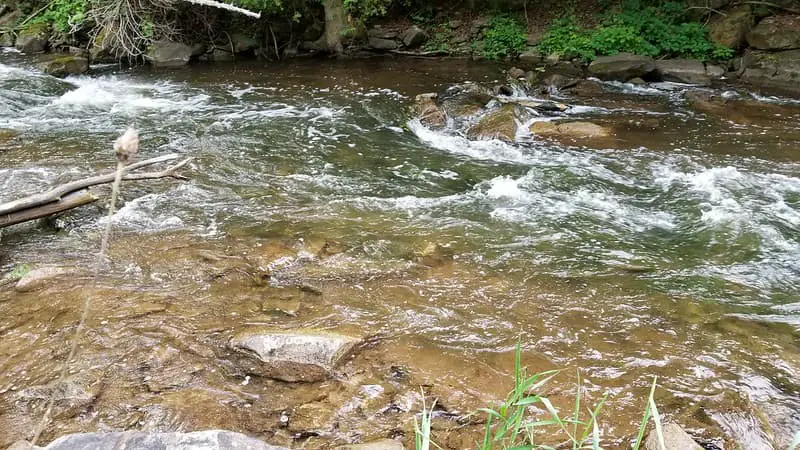
Spin fishing is also used when casting lures. When brook trout fishing in rivers, you need to cast the line across the river and slowly retrieve it allowing the current to impart action to the lure.
The best equipment for Brook Trout spin fishing
For brook trout fishing a reel size of 10 to 20 is perfect when combined with an ultra-light rod. For heavily wooded areas where it’s hard to cast, a 5 to 6 foot rod is a good choice. On larger rivers that are more open for casting I prefer 7 to 9 foot rods.
For best results with lures in bigger open water, the rod you choose should be at least 7-feet long. The longer rod will improve your casting distance and turning power. You should stick to the slower action rods since they are usually more sensitive.
I discuss river rods in more depth on my page Best River Rods.
Best Line For Brook Trout Fishing
For most brook trout streams a 4 to 6 pound high-quality line is a good option. For larger brook trout in bigger rivers, and when using lures, a 6 to 8 pound line is best.
There are 3 types of lines that anglers use when brook trout fishing, some are better than others. I discuss the best lines on my page The Best Fishing Line For Trout: What The Guides Use.
Best Lure For Brook Trout Fishing
For best results, use lures that match the size of the fish that you are fishing for. If the river is full of 6 to 10 inch brookies, use a very small lure. If you have a river that holds brook trout over 5 pounds, you could use lures 3 to 4 inches long.
Often, most fish will hit a small lure, but not every fish will hit a very big lure so downsizing is better than too big. The lighter the lure, the more fish will bite it.
I use different lures for different types of water and sizes of fish, as well as their activity level. If they are aggressive I might use a good search type lure like a spinner, but if they are less active a good lure to use would be one with a slow retrieve and an irresistible wobble like the Kwikfish and Flatfish.
Here is the list of lures that are suitable for brook trout:
- Blue Fox spinners – Sizes 1 to 3 for small brook trout, and sizes 3 to 5 for large brook trout
- Panther Martin spinner – – Sizes same as above
- Roostertail spinner – Sizes same as above
- Mepps Aglia spinner – – Sizes same as above
- Krocodile spoon
- Kastmaster spoon
- Flatfish and Kwickfish
- Phoebe spoon.
I discuss the best lures for all types of conditions and how to cover the water like an expert in my article Lure Fishing For Trout.
Float Fishing For Brook Trout
Float fishing is one of the best techniques for catching Brook Trout in rivers that are 3 to 10 feet deep. Float fishing works best in deeper, slow-moving pools, or anywhere where there is enough depth and length for a float and bait to drift naturally.
Not all rivers have suitable fishing spots for float fishing so knowing other methods like Bottom Bouncing is advised.
When float fishing brook trout, you need to present the bait below a float or bobber, unfortunately, if you o this in water that is too shallow and clear the float could spook the trout.
5-foot and 6-foot ultralight rods are an excellent choice for brook trout fishing in small streams. We recommend the St. Croix Premier. If you are brook trout fishing in rivers over 20 feet wide, you should best use an 8’6″ light trout rod.
The thing with float fishing is many anglers don’t do it very well. They don’t work the float well, they use bad leader setups, they use the wrong hooks, and they don’t cover the water very well. There is a reason why a float fishing guide will catch 10 times more trout than the average guy.
I discuss all the best float fishing methods, leader setups, and how to do it better on my page Float Fishing: River Guide Methods And Tips.
For float fishing for brook trout and for other trout, I recommend a long rod of 8 to 11 feet. The length will depend on the size of the river but there are benefits to a longer rod. You could also float fish small creeks with a 6 or 7 foot rod if you had to.
Best Bait For Brook Trout
The choice of bait depends on the water you are fishing and the time of the year.
You should try one of the following:
- Worms – live or plastic worms like the Berkely warms in pink, brown, and red are my favorites. See: Fishing With Worms For Trout and Steelhead: 10 Guide Tips
- Spawn Sacks- Small spawn sacks about the size of a dime or a pea are my favorite – Spawn Bags – Guide Secrets For More Trout And Steelhead
- Beads – See Bead Fishing For Trout – Easy Guide Secrets
- Flies – Flies can be fished using the bottom bouncing method or under a float – See How To Fish Flies With Spinning Gear
Berkley Trout Worms
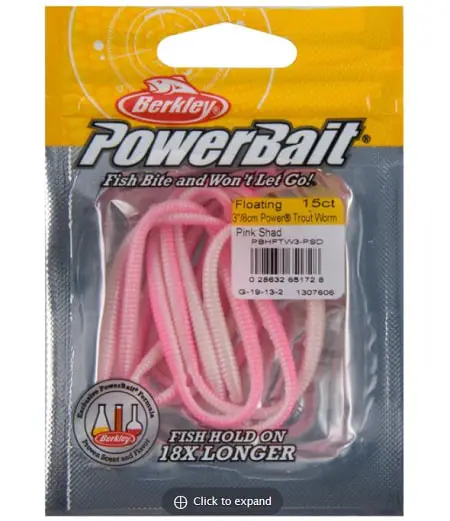
Berkley Gulp Earthworms / Red Wigglers
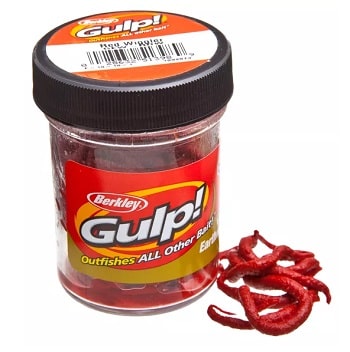
Berkley Gulp! Alive! Angle Worms
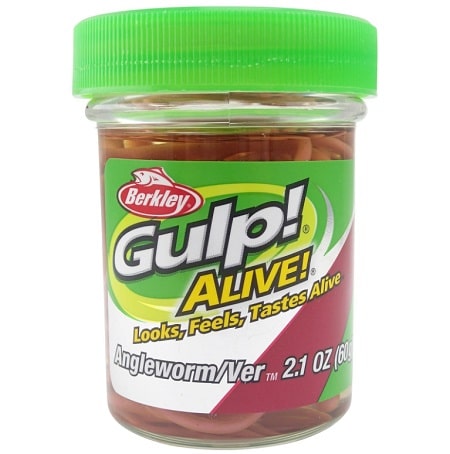
Brook Trout Fishing Tips
Brook Trout are fragile fish, and you should keep this in mind if you prefer to do catch-and-release fishing. Here are some practical tips that will help you keep your fish unharmed:
- Never fish for brook trout if the water is near or above 67 degrees. In the summer, fish only in high mountain streams early in the morning.
- Your hands should be wet when you touch the brook trout, or you risk rubbing off their protective layer of slime.
- Never put your fingers in the brook trout’s gills – they are highly sensitive!
- Do not squeeze the fish. Gently cradle the fish allowing it to distribute its weight on your hands.
- Try to land the brook trout in minimal time to minimize the stress it feels.
- Use barbless hooks.
- Use a net, or at least keep the brook trout in the water while you unhook it. Check out 5 Best Trout Nets
- Never pull the brook trout out of the water by holding the line.
- Every second the brook trout spends out of water increases the chances it will die. If you want to take a photo holding your brook trout, make sure everything is ready before taking the fish out of the water.
Brook Trout Fishing In Different Seasons
Brook Trout actively migrate up and down the rivers and streams in search of adequate conditions throughout the year and you may find big brook trout down the river at certain times of the year and at other times they might be far up the river or holding in certain spots.
Spring Fishing For Brook Trout
In the spring, the Brook Trout should be rather easy to find in much of the river but this is also when I tend to find more and bigger brook trout further down the river from where they hold during the summer. Often big brook trout will migrate down the river to bigger pools and deeper water where there is more food and where their survival is better.
Check the areas with rapids or strong currents that dump into pools. Late spring is the best time for fishing brook trout in many areas because the water is cold.
As the summer approaches and temperatures rise, the grass and brush in the Brook Trout’s natural surroundings grow thicker and allow them to remain hidden.
In early spring fish with flies, baits, and lures deeper and slower since the brook trout may be less active but as the spring warms, dry flies will become a good option if you see bugs on the water.
Worms are one of my favorite baits in the spring.
Summer Fishing For Brook Trout
In the summer, the water becomes too warm for Brook Trout, and they start to migrate upriver to colder water. They will also search out cold water upwellings, cold water creek mouths that enter the main river, and cold tributaries to migrate up.
If you can find cold water surface fishing with dry flies and fishing flies, baits or lures below the surface can be effective.
Fall Fishing For Brook Trout.
At the beginning of the fall season, brook trout can be found in faster water either feeding or looking for spawning grounds. Therefore, in September and early October, try to find fast-moving riffles that are at least foot deep.
As you approach the end of the fall season, move to the slow waters and deeper pools. Brook trout start preparing for the winter and congregate in specific wintering water and some will migrate downriver to bigger deeper water.
This is when there are fewer bugs on the surface so dry fly fishing is less productive. In the fall nymph fishing, streamer, lures, and baits fished near the bottom work the best.
Winter Fishing For Brook Trout
The winter fishing season on streams often lasts till late March and this is the time brook trout are concentrated and is when you need to fish slowly.
In many areas, the season is closed to brook trout fishing but some areas remain open and legal to fish for brook trout.
If you are allowed to fish for brook trout in the water it’s best you fish deeper pools and slow your presentation down as much as possible.
I also recommend using small baits and very small flies. Sometimes as small as size 18 to 20 midges or small stonefly patterns.
You should also avoid fishing first thing in the morning which is when the water is coldest and try late morning around 11 am to about 3 pm which is when the water may have either stabilized or warmed a degree or two. Stable water temps and warming temps this time of year can make them active.
Dropping water temps often shut them down.
The last thing is to dress warmly and stay comfortable. As a guide, I am sometimes on the water all day long in freezing cold temperatures and I do this many days in a row so I have some tips and tricks that guides use to stay warm. You can see them on my page Fishing In The Winter – Stay Warm With These 10 Tips
Brook Trout Fishing Q&A
If you have any questions, comments, or tips about brook trout fishing, let me and other readers know in the comments section below.
Tight Lines,
Graham
